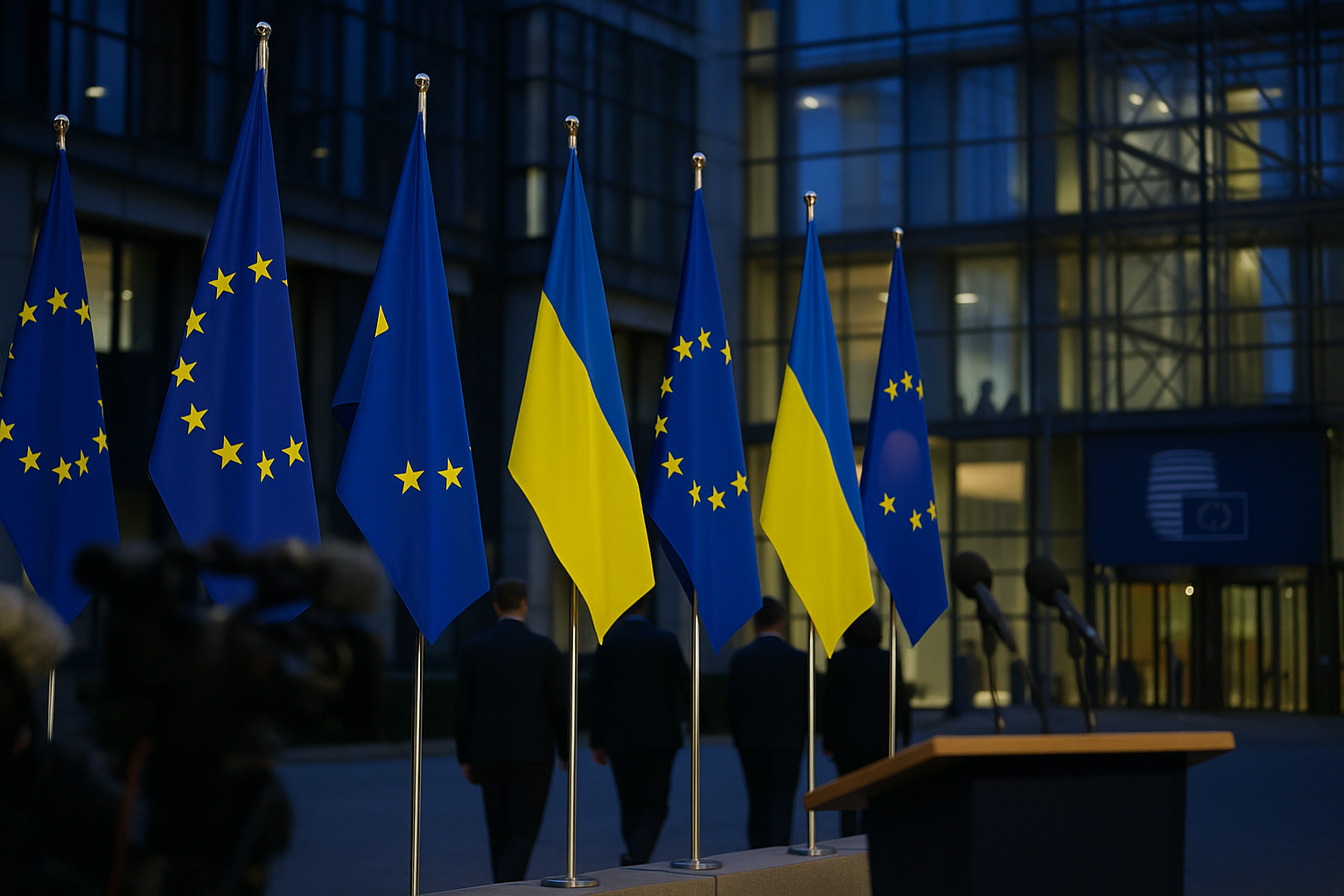EU Leaders Rally Behind Zelenskiy, Eye Russian Assets for Aid
By Tredu.com • 10/24/2025
Tredu

Support for Zelenskiy firm, financing blueprint takes shape
European leaders used the Brussels summit to rally behind Ukrainian President Volodymyr Zelenskiy and to advance a multi year financing plan for Kyiv. The emerging blueprint centers on bankrolling Ukraine for the next two years while exploring a €140 billion loan anchored in immobilized Russian state assets that sit in European clearing systems. The proposal would complement existing aid channels and give Kyiv visibility on funding for defense and essential budget needs. Belgium, where a large share of those assets is held via Euroclear, pressed for legal risk sharing before any proceeds flow.
What the assets plan would do, and what still divides capitals
The concept under discussion is to raise debt that is serviced by income or principal from frozen Russian holdings. Advocates say this would match the scale of Ukraine’s war time requirement and reduce the burden on national budgets. Several issues remain open. Belgium wants other EU countries to share liability if creditors sue. Some member states prefer to tie the money to European equipment purchases, while Kyiv argues it must have autonomy to buy wherever supply is fast and competitively priced. Leaders signaled political backing for the contours of the plan, then tasked officials to work through legal and technical details.
Sanctions track moves in parallel
Alongside the financing debate, the bloc approved another Russia sanctions package that includes a path to ban imports of Russian liquefied natural gas from 2027. The measures add pressure on Moscow while aligning Europe’s energy transition with security goals. Kyiv welcomed the package and urged capitals to accelerate enforcement and to close loopholes in shipping and transshipment.
Belgium’s pivotal role and the push for guarantees
Belgium’s influence is outsized because of Euroclear’s central role in holding immobilized Russian reserves. Prime Minister Bart De Wever said he would block an assets scheme that leaves Belgians carrying disproportionate legal risk or that fails to tap frozen holdings outside Belgium. Brussels wants explicit burden sharing and assurances that the design is compliant with international law, which leaders acknowledged will require careful drafting. Markets read the Belgian stance as a negotiation lever rather than a veto of principle, yet it is decisive for timing.
The message to Kyiv, and the military dimension
For Zelenskiy, the immediate priority is air defense, long range strike capability, and reliable budget support. EU leaders reiterated that Ukraine will not be asked to trade sovereignty for aid, and that the goal is to strengthen Kyiv’s ability to defend itself while preserving essential public services. The two year timeframe for the financing plan is intended to bridge uncertainty around other donor flows and to stabilize planning across ministries, the armed forces, and the energy grid.
Politics inside the EU, and the Hungary variable
Most leaders lined up behind the approach, while Hungary has continued to express reservations about elements of Europe’s Ukraine strategy. The summit communiqué and press briefings sought to emphasize broad unity, even as language on frozen assets and spending conditions was calibrated to keep all but one capital onside. The choreography illustrates how EU politics often move in stages, with an initial political signal followed by legal work that converts intent into binding decisions.
Economic guardrails, legal footing, and global coordination
Officials stressed that any loan against immobilized Russian assets must rest on firm legal reasoning and be coordinated with G7 partners to limit litigation risk. The design choices include whether to rely on windfall profits from the assets, whether to pledge principal, and how to structure guarantees across member states. Lawyers will test the plan against European treaties, international immunity doctrines, and existing sanctions law. Finance ministries, for their part, will gauge market appetite for the instruments and the implications for EU balance sheet metrics.
Energy and trade spillovers
The LNG restriction that phases in by 2027 signals longer term decoupling from Russian hydrocarbons. Traders and utilities will start shifting contracts, shipping routes, and regas capacity allocations. The interplay between energy markets and defense financing is not incidental; both shape inflation, budget choices, and public support. If gas flows tighten, leaders will face a familiar balancing act between sanctions credibility and price stability.
Market reaction and the macro frame
A credible two year financing backstop reduces the near term risk premium on Ukraine related exposures and can steady expectations for reconstruction suppliers. For the euro area, the headline impact is modest in the short run. Over time, issuance mechanics, procurement choices, and LNG transitions will touch spreads, utilities equity valuations, and defense primes. Investors will parse the wording on spending autonomy. A narrow Europe only procurement rule would concentrate orders; broader flexibility would speed deliveries but tilt some demand outside the bloc.
What happens next, and why it matters for Tredu readers
Leaders left Brussels with a political handshake and a to do list for lawyers and finance officials. Watch for a formal legal proposal on the assets backed loan, clarifications on spending rules, and whether Belgium’s conditions on risk sharing and scope are met. Progress on air defense shipments will be another test of resolve. For Tredu readers, the signal from Brussels is clear: EU leaders rally behind Zelenskiy, and they are prepared to eye Russian assets for aid if the law, the markets, and unity can be aligned.

How to Trade Like a Pro
Unlock the secrets of professional trading with our comprehensive guide. Discover proven strategies, risk management techniques, and market insights that will help you navigate the financial markets confidently and successfully.


